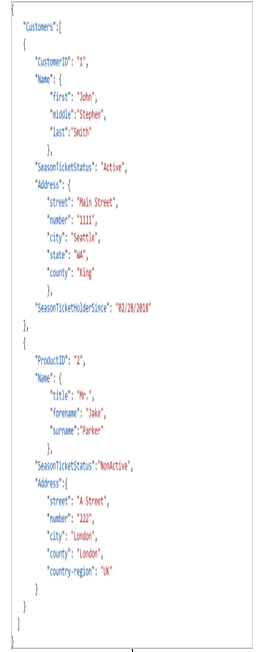Semi-structured Data
Semi-structured data has some structure to it but no defined schema. This allows data to be written to and read from very quickly since the storage engine does not reorganize the data to meet a rigid format. While the lack of a defined schema naturally eliminates most of the data volatility concerns that come with structured data, it makes analytical queries more complicated as there isn’t a reliable schema to use when creating the query.
The most popular examples of semi-structured datasets are XML and JSON files. JSON specifically is very popular for sharing data via a web API. JSON stores data as objects in arrays, which allows an easy transfer of data. Both XML and JSON formats have somewhat of a structure but are flexible enough that some objects may have more or fewer attributes than others. Because the structure of the data is more fluid than that of a database with a schema, we typically refer to querying semi-structured data as schema-on-read. This means that the query definition creates a sort of quasi-schema for the data to fit in. Figure 1.6 demonstrates how JSON can be used to store data for multiple customers while including different fields for each customer.
There are multiple ways that we can store semi-structured data, varying from NoSQL databases such as Azure Cosmos DB (see Chapter 3) to files in an Azure storage account (see Chapter 4). Relational databases such as SQL Server, Azure SQL Database, and Azure Synapse Analytics can also handle semi-structured data with the native JSON and XML data types. While this creates a convenient way for data practitioners to manage structured and semi-structured data in the same location, it is recommended to limit the amount of semi-structured data you store in a relational database to very little or none.
Semi-structured data can also be stored in other types of NoSQL data stores, such as key-value stores, columnar databases, and graph databases.

FIGURE 1.6 JSON example